The Sedum adolphi is also known by its more common names, Golden sedum, and Golden Glow. It is an interesting-looking succulent that trails along the ground. It is native to Mexico, where it grows wildly in the rocky outcrops.
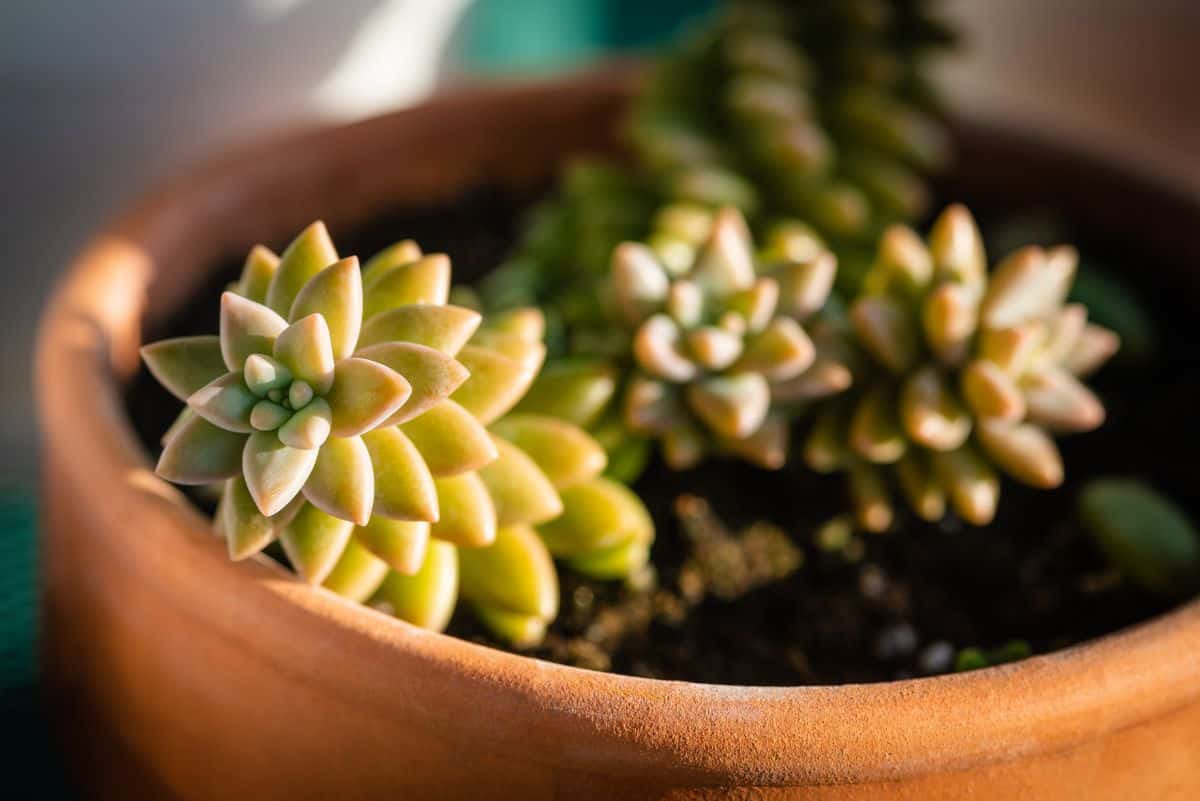
The spherical-shaped leaves grow in a rosette formation. They are bright yellow in color, but the tips change color and develop a reddish tinge in the sun.
The rosettes continually produce new leaves that emerge from the center of the rosette, dropping off the old outer ones in the process. These dropped leaves often self-propagate, and new plants develop. This helps to create a thick growth of succulents.
The Sedum adolphi is a spring-flowering succulent, with small white flowers. They have a sweetish scent. Although many succulents have toxic properties, this one is not at all harmful to humans or animals.
The Sedum adolphi is a fast grower. It does particularly well in hanging baskets. It will also thrive in rock gardens.
Jump to:
Sedum Adolphi Appearance
| Name: | Sedum adolphi |
| Soil: | Well-drained soil |
| Blooming: | Early spring |
| Light: | Full sun partial shade |
| Water: | When the soil is completely dry |
| Propagation: | Leaves and cuttings |
The Sedum Adolphi is a beautiful succulent, providing ground cover in a wonderful range of hues. The colors vary from bright yellow to brown to orange to red, depending on the amount of exposure to the sun. The longer it is in the sun, the more likely it is to blush a bright shade of red.
The Sedum adolphi will reach an average height of about 8-10 inches. It has colorful stems, which branch out and spread rapidly. The leaves are quite thick, and face upwards. The leaves form attractive rosettes.
The leaves of the rosettes are smooth and shiny. They will grow to a length of about 1.4 inches. The rosettes themselves can become quite large, up to about 4 inches in diameter, as they constantly develop new leaves.
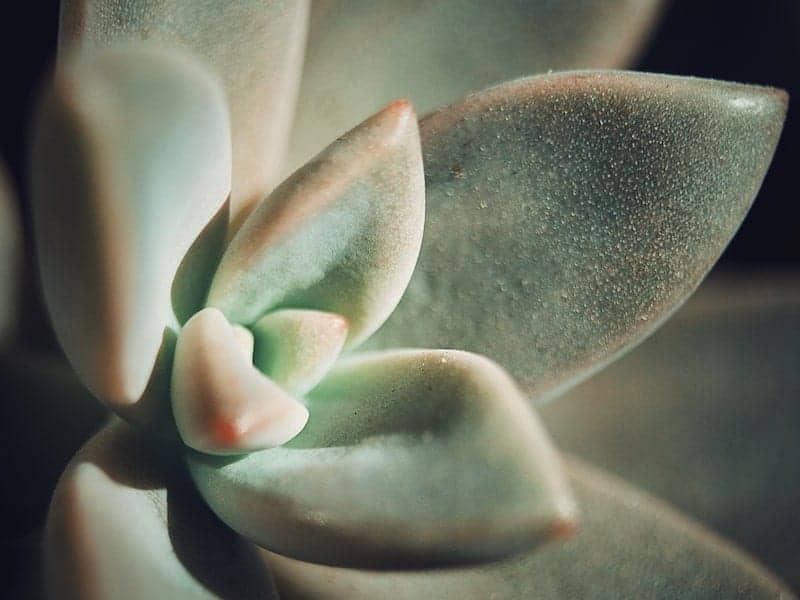
Buy it from:
The Sedum adolphi spreads very quickly and easily, and will soon cover a large patch of ground if the conditions are ideal. They are perfect for growing in hanging containers, as they will trail downwards and give a magnificent cascading show.
The Sedum adolphi does not always bloom easily. When it does bloom, this usually happens in winter. It has a small, star-shaped white flower, with a sweet scent.
Caring for the Sedum Adolphi
The Sedum adolphi is an easy succulent to maintain and requires very little care. It is an independent plant that is generally fairly tough and will thrive, even if left to its own devices.
Light
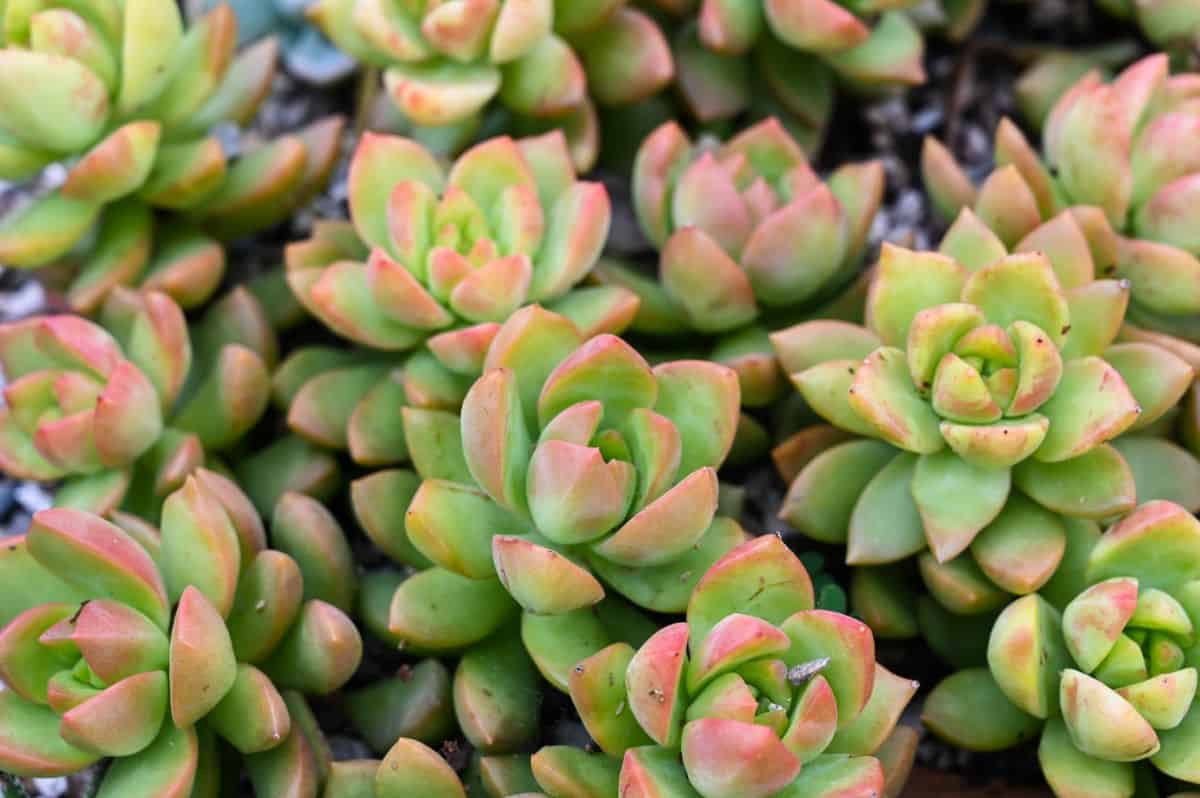
No products found.
The Sedum adolphi needs a lot of natural sunlight. It should be planted in a spot that gets full sun to partial shade. It will do well if it receives at least 6 hours of sunlight per day.
While it needs natural sunlight, take care not to subject your Sedum adolphi to too much sun. Over-exposure to intensely hot sunlight can cause sunburn. If this happens, the leaves will wilt, and the plant will dehydrate.
When planting the Sedum adolphi in outdoor beds, choose a position that gets direct sunlight for a large part of the day, but also has some dappled shade.
The Sedum adolphi also makes a lovely indoor plant. Select a warm room with a south-facing window. This succulent will grow quite happily in a pot on the windowsill, and will soon be trailing down and thriving.
If you don’t have enough natural light indoors, it is recommended to get a grow light from a nursery or garden center. This will mimic natural light, and encourage healthy growth in your plant.
Water
Take care not to overwater your Sedum adolphi. The roots should never be left to sit in permanently damp soil. This will cause them to rot, and will also encourage fungal infections to take hold.
It is imperative that your pots have good drainage holes at the bottom. Water the plant by soaking the soil deeply, and then allowing the water to drain off. The soil needs to dry out completely before you water it again.
To test if the plant needs water, insert a wooden skewer or a kebab stick deep into the soil. If it is totally dry when it is removed, the plant can be watered. You can also insert a finger to feel if the soil is dry inside.
See Related Topic: Fred Ives (Graptoveria) Succulent Care Guide
Temperature
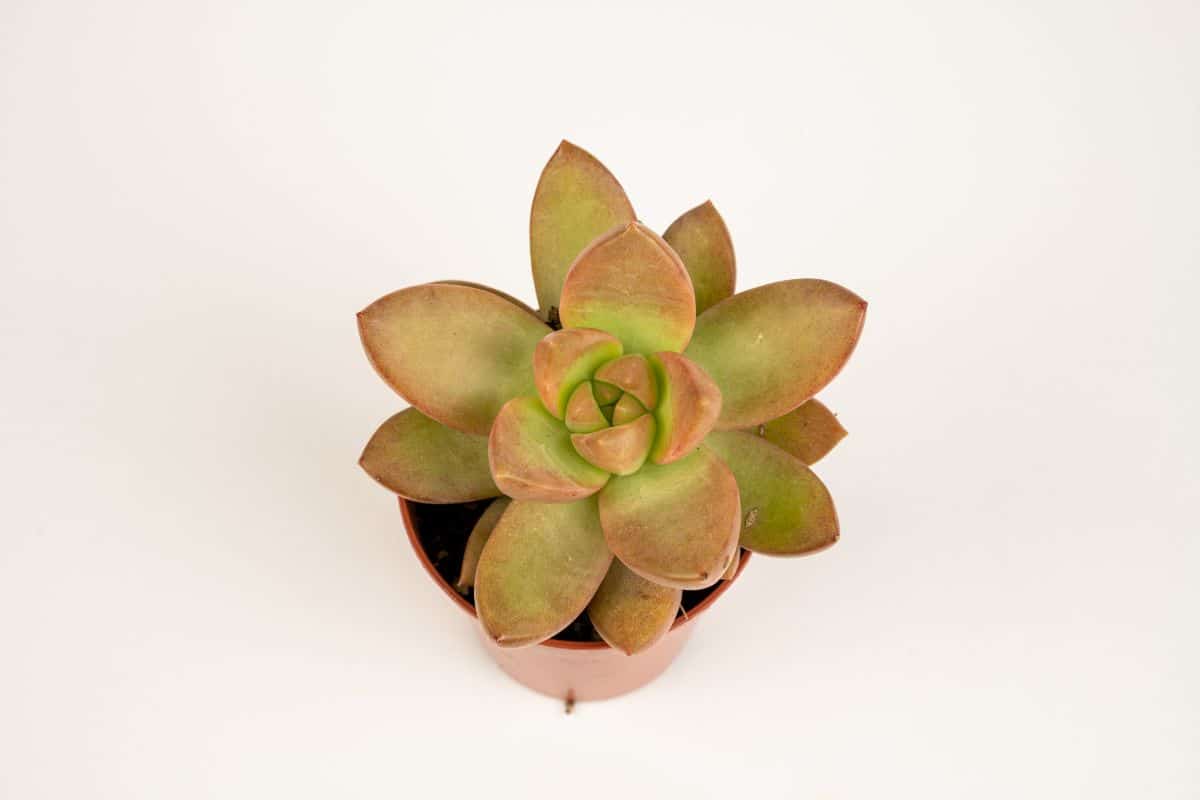
The Sedum adolphi will not cope well with extreme cold. Because it is native to a very hot area, it is unable to adapt to very cold conditions.
If you live in an area with a mild to moderate climate, you can plant this succulent in outdoor beds. It will do well in a warm spot that gets lots of sunlight, as long as overnight temperatures do not dip too low.
If your area is prone to very cold weather, where the temperature often falls below 20° Fahrenheit, it is advisable to plant your Sedum adolphi in containers, so that you can take them indoors when cold weather is forecast.
If overnight frost is expected, it is essential either to move your plant inside overnight or to cover it lightly to protect it from the frost. Exposure to heavy frost will cause serious damage to your Sedum adolphi, and may even kill your plant.
If you have chosen to cultivate a Sedum adolphi as an indoor plant, the best spot for it would be in a warm room with lots of sunshine. Try to avoid rooms that get very cold overnight, as sudden drastic changes in temperature can cause trauma to the plant, even indoors.
Soil
While the Sedum adolphi will grow well in most PH conditions, it does need soil with good drainage. The soil should be made up of a combination of cactus potting soil, and mineral grit such as perlite, pumice, or coarse sand. You could even use a blend of all three of these elements together with your potting soil.
Your container should have numerous holes at the bottom, in order to ensure good drainage. Even if you have excellent soil that allows for drainage, if the water is unable to drain out of the pot, the plant will suffer the consequences.
Propagating theSedum adolphi
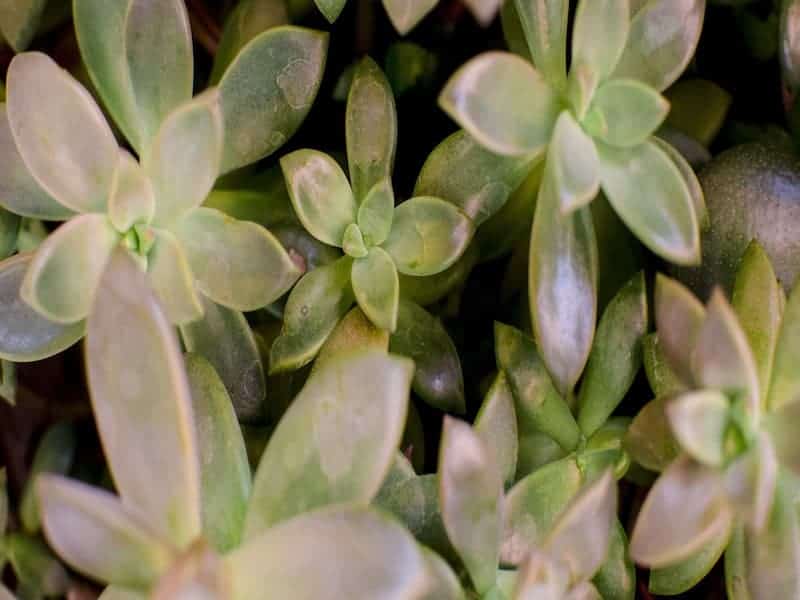
The Sedum adolphi can be propagated quite easily, either from leaves or cuttings.
Propagating from leaves
Twist off a few leaves and allow them to dry for a few days. Place the leaves on a layer of soil in a small dish, and water lightly every few days, until little shoots appear.
Plant in a prepared pot of soil, and water every few days until a new plant starts growing. Then adapt to the watering schedule described above.
Propagating from cuttings
Cut a piece at the base of the stem using a clean, sharp pair of scissors. Leave it to stand for a few days, to dry out and callous over.
Once a callous has formed, insert the cutting into a pot of soil and water regularly. It should soon take root, and you will cultivate a new plant.
You May Also Like: Little Jewel (Pachyveria Glauca) Succulent Care Guide
Common Problems
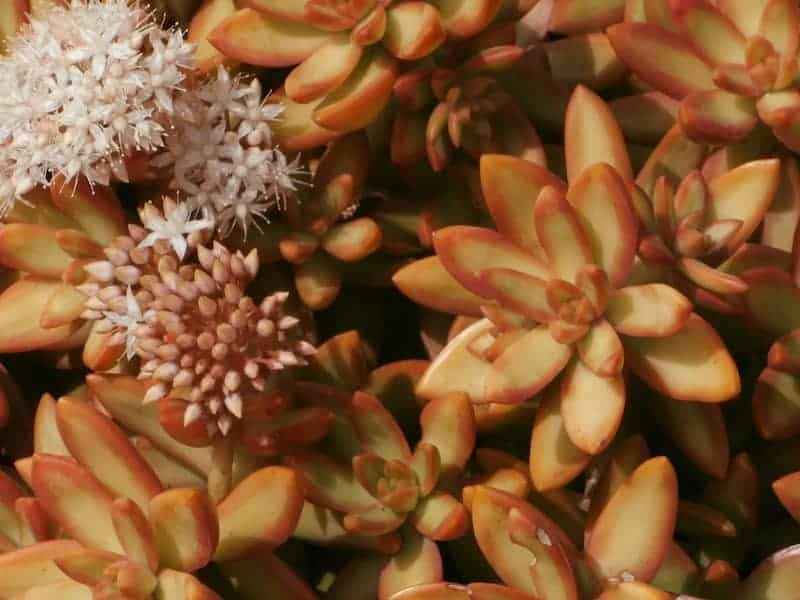
There are two main problems that you need to watch out for.
Overwatering
Watering too much or too often will cause the roots to rot, and the plant will eventually die. Make sure that the soil dries out completely before watering again.
Pests and bugs
Aphids and mealybugs are both frequently found on the Sedum adolphi. These can devour your succulent if left unchecked. The best way to eliminate them is with a commercial pesticide, available from your local garden center.
Sources:
https://mountaincrestgardens.com/sedum-adolphii-golden-glow/?aff=2


